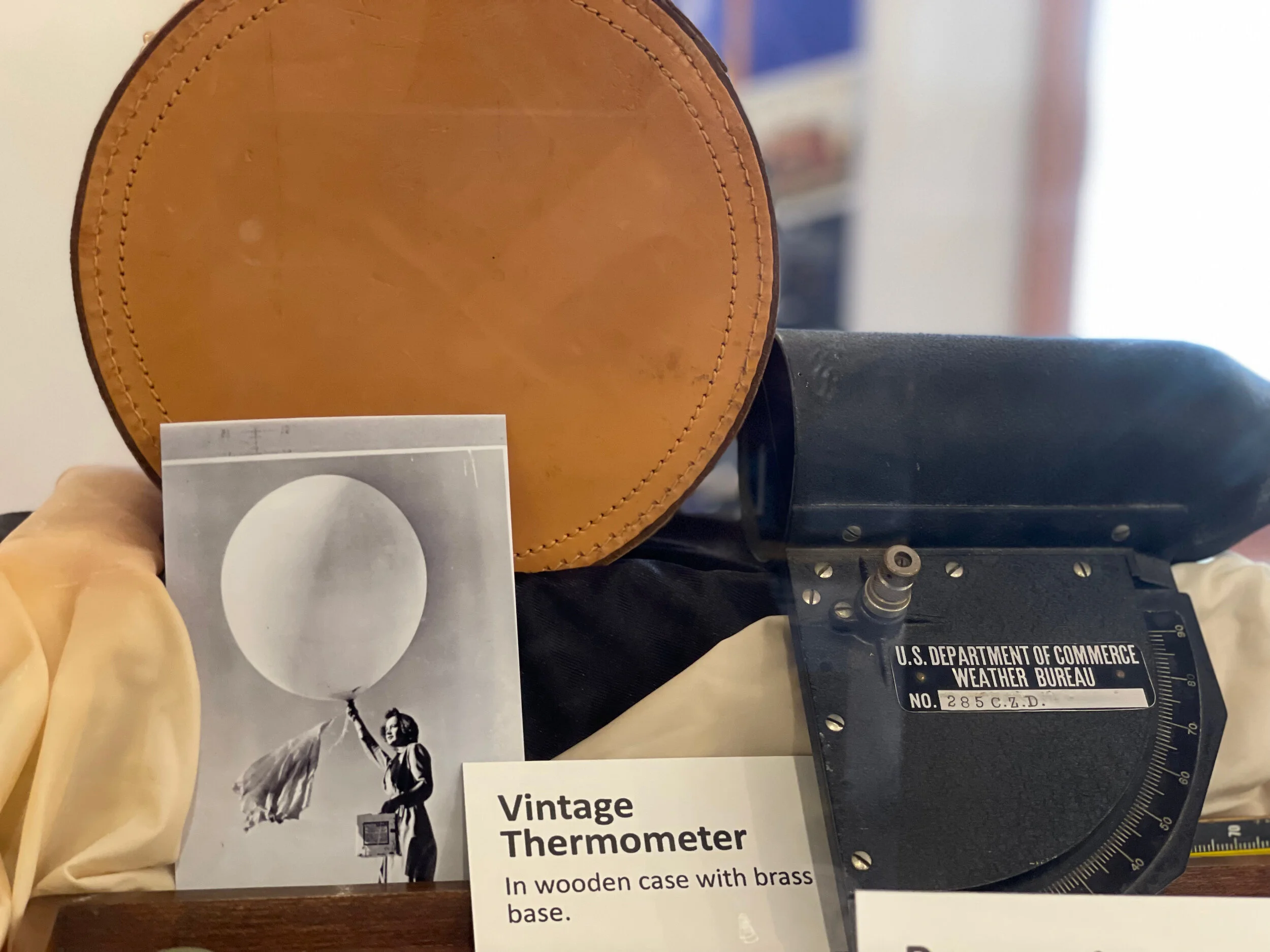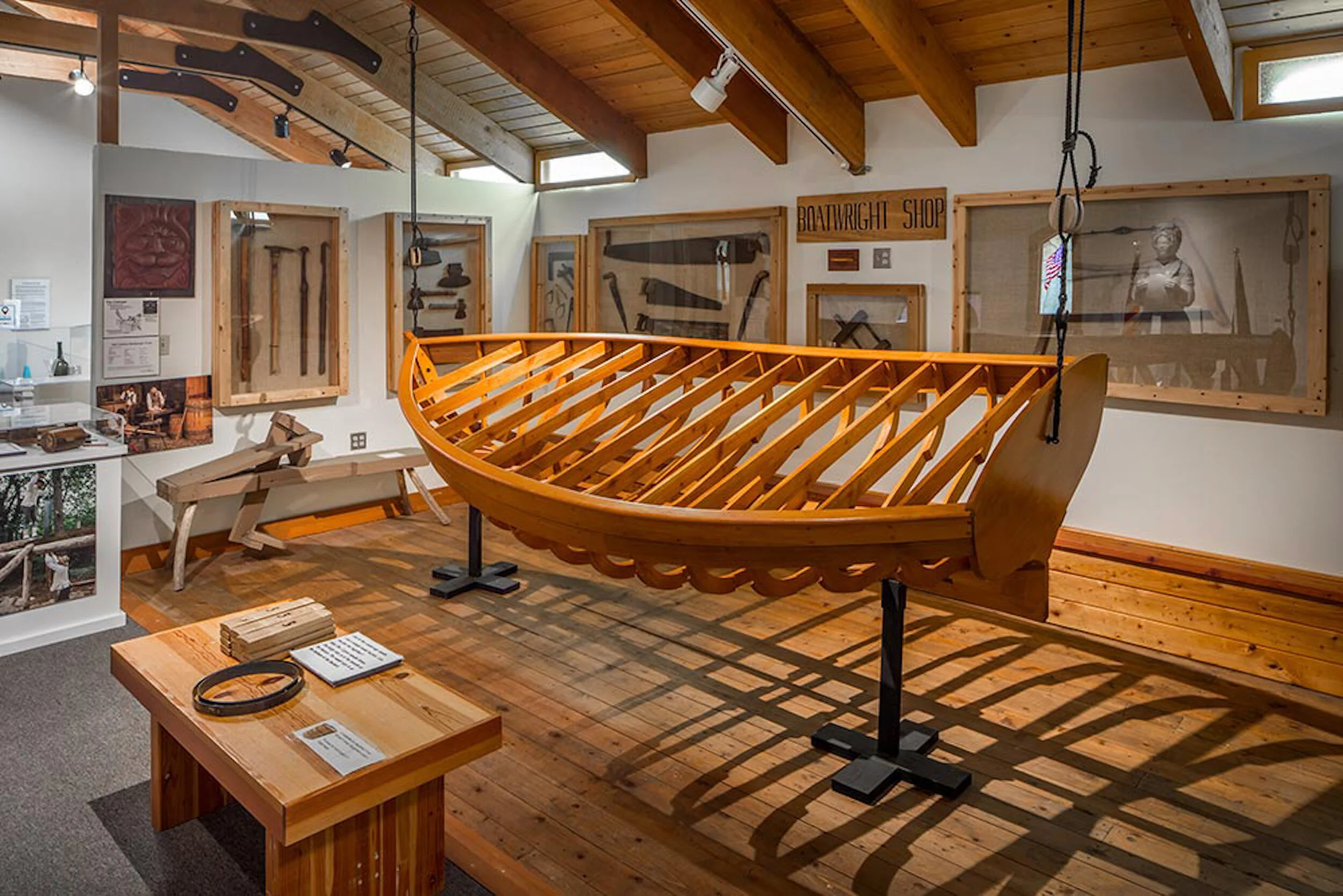We give big props
to the Oregon Coast’s maritime museums







Your ship has come in. Go down with the ship. Ship of fools. There are a boat-load of expressions stemming from what amounted to a relatively short period in the history of the human propensity to not stay still for very long. And I’m sure there are more that you, gentle reader, could add to the list to get it truly shipshape.
Before weight-bearing bridges could be efficiently built, roads were either rocky, impassable to more than a group walking in single file or were so muddy that wheels would simply disappear, ships opened up trade and allowed for supplies to come to the people instead of the people having to always go to the supplies.
This was especially true for the Oregon Coast.
“Maritime trade was so important in the late 1800s and early 1900s because our area was not reachable by train,” said Faith Kreskey, executive director of the Pacific Maritime Heritage Center in Newport. “There were stagecoaches, but for example the trip from Mapleton to Gardner took 48 hours and involved multiple ferry crossings.”
Today, the roughly 33-mile trip will take less than an hour, barring traffic or seasonal issues.
“There was a stagecoach route from Corvallis to Toledo and a ferry that continued on to Newport, but basically the only way to get goods anywhere was by ship.”
But as with most man-made things, there were limits to their effectiveness. Spoiler alert, pre-modern ships sank. A lot.
“The Umpqua and the Columbia River bars were the most dangerous crossings on the Oregon Coast,” Kreskey said. “The mouth to the Yaquina was actually not that bad but we have had our share of wrecks, mostly from before the jetty was put in and navigation equipment improved.”
Information about Yaquina Bay shipwrecks is now on display at the recently re-opened museum, and will soon be supplemented by a map showing the locations of each known wreck.
The museum’s main display hall features a large roll-top desk salvaged from one of those wrecked ships.
“The Yaquina City was a steamship that wrecked in 1887,” Kreskey said. “This desk was salvaged that year and was in really great shape. It was in a local machine shop until the 1960s or 70s. The fact that this was owned by someone not associated with the boat is interesting to me. It helps you picture how things could be so chaotic during a wreck that people would just be rowing out and grabbing whatever they could.”
Not all of the wrecks whose stories are told at the museum are from the heyday, though.
“The Blue Magpie went aground on the north side of the jetty in 1983,” Kreskey said. “It dumped about 92,000 gallons of oil in the bay.”
With some prompting, Kreskey next leaked a story to me about one ship who truly seemed cursed, if such a thing exists, though the issues with the Condor were likely due more to an inexperienced captain than it being hit with an evil eye.
“I like this story in particular because the media coverage at the time was so hilarious and it was this little underdog of a boat,” Kreskey said. “It primarily ran from the Yaquina Bay to the Alsea, which wasn’t that lucrative a route. They started building her in 1897 and from the beginning things went wrong, like the funding kept drying up. It was kind of a cursed ship by the time they were finally able to begin running it around 1910 and, by then, she was already a bit outdated. They would get stuck a lot if the weather was rough and the media was always roasting them: ‘Oh, the boys are stuck again’ that kind of thing. They got tangled in a fishing net in Astoria, then ran out of gas on a run to Portland. They ran out of gas again then went adrift in Coos Bay, then trying to leave Coos Bay they got tangled in a chain attached to the dock. In 1912, they dropped the propeller in the Yaquina Bay and that was it for the unlucky little ship. I don’t think anyone was particularly surprised when it finally wrecked for good and, luckily, nobody was injured which would have made the story less amusing.”
There are many more stories to see and hear in the museum’s large theater, which has a self-serve selection of historical videos called the “Ebb and Flow” series, not to mention a beautiful view of the Yaquina Bay.
“Our history videos were created from our archival photos and are very well-made,” Kreskey said. “They cover a lot of different topics, like the formation of the Nye Beach area, the timber industry, the tribal history of the area and the Copland Collection.”
Clarinda Copeland moved with her husband to the Siletz Reservation in 1883. He served as trader to the Confederated Tribes and, when he died in 1884, she became the only woman in the United States granted a license to trade with Native Americans. She left the area in 1889.
“She ran the reservation store and left behind an amazing collection of local artifacts,” Kreskey said. “We now have a massive amount of photographs because of her that document a time that has unfortunately been largely un-documented.”
Kreskey took her position at the helm of the ship-shaped museum in the fall of 2020, coming from the Lane County History Museum. She has a Master’s of Art from the University of Oregon.
“Our funding is from the county special budget,” she said. “It’s great to work for a county that is so supportive, and the community is very enthusiastic about local history, so they are also very supportive.”
The museum’s re-opening means locals and visitors alike can again peruse the various historical displays, more of which are in the works.
“We are trying to get more integrated with our content, like the Native American cultural information that we are weaving through all of our displays,” Kreskey said. “We have a new introduction to maritime history exhibit that will be opening September 16, and a new Coast Guard exhibit too.”
If you are trying to sink deeply into research about a Newport area maritime topic, the archives are available by appointment.
“Basically, you can submit a request and we’ll let you know if we have something on the topic you are looking for,” Kreskey said. “We do charge a fee but you won’t waste your time and money trying to find something we don’t have, and we can help with researching something thing like a particular wreck.”
For now, the records and archival information include the classic microfiche format.
“We are working on digitizing,” Kreskey said. “But to get it all done will probably take the next decade.”
The Pacific Maritime Heritage Center, located at 333 SE Bay Blvd., Newport is open Thursday through Sunday from 11 am to 4 pm. For more information, go to oregoncoasthistory.org or call 541-265-7509.
Roughly 69 nautical miles up the coast sits the Garibaldi Maritime Museum, anchored by a large statue of Captain John Gray, a man of dubious distinction who “discovered” the passage up the Columbia River in 1792. The museum is currently considering public comments about alternatives to the statue, as it represents westward expansion but also the aggressive eradication of the Tillamook area indigenous populations.
With a particular penchant for entertaining kids, the museum organizers have set up a “Kids Korner, with replica antique toys and nautical outfits to try on, and a scavenger hunt.
Displays range from tiny models of historic boats to the eight-foot tall, 400-pound
replica of Lady Columbia, the figurehead on Captain Gray's ship, Columbia Rediviva. Most figureheads were carved from a single block of wood, but the model, sculpted by Gary Anderson in 2005, is made up of 40 pieces of basswood in a variety of sizes.
The Garibaldi Maritime Museum, located at 112 Garibaldi Avenue, is open Thursday through Monday from 10 am to 4 pm. For more information, go to garibaldimuseum.org or call 503-322-8411.
